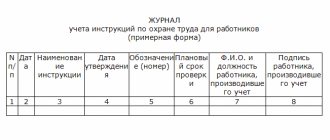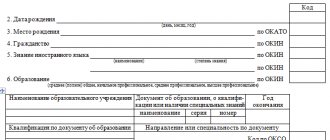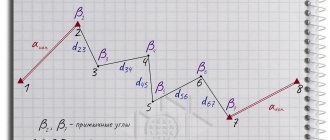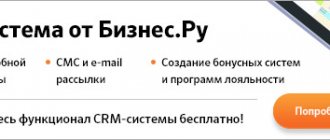How to fill out a production characteristic for the ITU
A sample of this document is usually provided to the employee by ITU staff along with a list of required documents. The employer only has to fill out the production characteristics form for the ITU. You can fill it out below. The employer can also fill out the document on his own letterhead, but he must include in it all the information that the employee requires to undergo the ITU examination. Otherwise, his documents may not be accepted, or he may be denied a disability group.
The form must be filled out in compliance with the following requirements:
- The document must be filled out in the present or past tense, this will depend on whether the employment relationship with the employee has been terminated or not.
- The document can be filled out either printed or by hand. In the latter case, the data is simply entered into the empty lines of the production characteristics form.
- If the form is filled out by hand, there should be no blots or corrections.
- The characteristics are signed by two or more employees of the enterprise (manager, chief accountant, personnel officer, trade union representative, etc.). This will depend on who is entering the data on the form.
The production characteristics are drawn up at the request of the employee (former employee) within three days.
General rules
Compilers of characteristics must take into account the following rules:
- The main text of the document contains information regarding the employee being characterized.
- Filling out all available columns is done by a third party. When specifying data from the first person, the document is considered to be drawn up incorrectly.
- The document is drawn up on a sheet of A4 paper. The majority of organizations and institutions have developed a standard form that should be used when writing. If the form has not been developed, you can find a sample on the Internet.
Example of a characteristic form - Existing requirements are met in full. In case of deviation from the established rules, the result may be a refusal to accept paper.
- The characteristic is filled in in the past or present tense. The past tense is used when an employment relationship with a person has been terminated.
- The finished document is certified by affixing at least two signatures.
https://youtu.be/D06-Zisa2SY
Sample of filling out the production characteristics for ITU
The production characteristics must contain the following information:
- Full name of the employee.
- Full name and location of the enterprise that provides the description.
- The workshop (department) in which a person works.
- Describe how the labor process of this employee is organized (individual work, team work, etc.).
- The position in which the employee works at the time of passing the examination, or in which he worked before dismissal.
- Additional information about the position or profession (qualification, rank, related specialties, etc.).
- Description of the work performed and its characteristics: tension, heaviness, monotony, etc. As a rule, this data can be taken from the SOUT (certification) card of the workplace.
- Does the employee have benefits (shorter working hours, additional leave, etc.).
- Indicate whether the employer can transfer the person to an easier job.
- It is necessary to write whether the person copes with the current job, if there are production standards, indicate them as well.
- Provide wage amounts for the last year, broken down by month.
- Indicate the number of sick leaves and their duration for the last year.
The list of documents that an employee needs to pass the examination also includes a production characteristic for the ITU. You can download the 2020 form from the link below. Usually it is filled out according to the established template, but if the employer uses his own characterization form as a basis, he must include all the required information in it.
An example of filling out a production characteristic for ITU
The main thing about the characteristics for VTEK
Legal regulations
The form of production characteristics for VTEK is not included in the album of unified forms of primary accounting documents, and therefore, according to the current legislation, it is regulated by local acts of territorial or internal (within the organization) action, and a sample production characteristics for VTEK is developed by the owner independently.
At the same time, there is a list of data that must be reflected in the document. And if the territorial Health Administration does not establish its own sample for filling out the production characteristics for VTEC, when creating the characteristics form and filling it out, one should rely on the Law “On Social Protection of Disabled Persons in the Russian Federation” (No. 181-FZ of November 24, 1995).
Document status
The characteristic is an official document, certified by the head of the enterprise and a number of officials, and has full legal force.
A production characteristic for VTEC is not a document characterizing a person. It cannot be positive or negative, it is neutral in nature and has an exclusively informational message.
Unlike the traditional job description, it reflects detailed information on:
- the nature and conditions of work;
- employee's production tasks;
- forced transfers due to illness, the possibility of retraining, changing working conditions in the position held in the direction of easing or reducing production standards.
The reference is provided to the employee, regardless of length of service at the enterprise. Designed to pass a medical and labor expert commission (VTEK) or a medical and social examination (MSE).
Filling out the form for the examination
An employee of the organization or the ITU can initiate the preparation of documents. In the first case, you will need to indicate the institution at whose request you need to fill out the form. In the second situation, a request from the bureau is required. The characteristics are drawn up on a special A4 format. You need to prepare the paper in 2 copies. A copy remains in your personal file. The original is provided to the employee. Arbitrary entry of information is acceptable. However, it is important to take into account all the requirements. To minimize the risk of errors, production specifications for the 2019 ITU are recommended.
If the citizen continues to be listed as an employee of the enterprise, all information is indicated in the present tense. If there was a dismissal - in the past.
The form must contain at least 13 mandatory items. The exact volume depends on the disease.
https://youtu.be/ZwlmrEdEpVA
The paper prepared for ITU must contain the following information:
- Full name of the employee. Indicated in the nominative case.
- Name of the organization. Indicated in full. You have to write down the legal address, department, area where the patient works.
- Position held and length of service. The period of time during which the person works in this company is indicated. Additionally, assigned qualifications are specified.
- Main specialty.
- Information about the employee's qualifications. The name, assigned category, class and rank are indicated.
- The main type of employment. Information about the work performed by the person is also indicated here. This can be manual or machine labor.
- The daily routine is reflected. You will need to specify the number of days off and the duration of your vacation. Data about the position in which a person is forced to perform work duties is also recorded here. The employer must reflect the amount of psychological and physical stress, as well as the level of hazards and noise. This section must be filled out with great care. It allows you to get an idea of the adverse factors affecting the body.
- Information about labor productivity. Output is expressed as a percentage. Additionally, it is indicated whether the citizen copes with the daily norm. If the indicators are low, it is important to indicate the reason that led to this.
- Data is recorded on the submitted certificates of incapacity for work and the amount of time that was provided as leave. Data is provided for 12 months.
- The clause specifies the types of benefits available to the employee. This may be the right not to go on business trips, a short working day, or exemption from workload.
- The employer reflects the ongoing relocation with a change in wages as a result of the deterioration of the employee’s well-being, if such a thing occurred. It is necessary to reflect when the action was performed and where the face was moved. The assigned position is recorded.
- The manager indicates whether he can provide the employee with a different position taking into account the disability. If a transfer was carried out before, the paragraph states that it will not be possible to carry out the action again.
- Information is reflected that was not previously specified, but may have an impact on the examination. Here they usually write about the personal qualities of a citizen, his abilities and skills.
Labor cooperation
Labor cooperation is the organizational production interaction between individuals, teams, teams, sections, workshops, services, which occurs in the process of activity and is aimed at achieving production goals. Ensuring the correct use of labor ensures the effectiveness of cooperation.
The forms of labor cooperation are:
- Entities located within the same society. In this case, the products of labor are exchanged in certain sectors of economic activity.
- Those located within the type of activity that involves the exchange of products or the collective participation of a number of organizations in the production of a certain type of goods.
- Located within the organization. In this case, an exchange is carried out between workshops, departments or individual performers, based on specific conditions (for example, type of production or technology features).
Characteristics of employee working conditions for medical examination
There are four classes of working conditions. The first class includes optimal working conditions, in which conditions are created for the employee to maintain his health, thereby increasing the employee’s performance. Typically, private, small entrepreneurs are interested in this, since the most important thing for an entrepreneur is capital. For larger organizations, the main thing is to create working conditions that will not interfere with the normal functioning of the employee. Or at least the harmful factors will not reach dangerous levels and will not contribute to the deterioration of the employee’s health.
The next class of working conditions is acceptable. This is the case when the levels of working environment factors do not exceed the norms of hygienic work and do not contribute to a decrease in performance. Possible injuries that may occur during production or changes in the functioning of the body are restored during rest, this will not constitute a violation of rights in the labor code. Acceptable labor standards refer to bladeless ones, just like optimal ones. Harmful working conditions exceed the permissible norm and have a detrimental effect on the worker’s body and his offspring.
Read more: 7 Salary allowances upon dismissal calculator
If employees observe such a situation at their workplace, they have the right to seek help from the relevant authorities. And the fourth class of working conditions, which is perhaps the most dangerous and harmful to the human body, is hazardous working conditions. It is obvious that a person will not be able to work in such conditions. During the working day, some damage is caused to the employee’s body, which can lead to serious development of the disease, due to which one may lose his job, since the person will simply not be able to cope with his work, and it is also possible that there will be an impact and for posterity.
Main and auxiliary workers
Based on the method of setting planned tasks and recording the work done, forms of labor organization are divided into:
- Individual. They require a personalized approach when distributing production tasks, recording work performed, or calculating wages (for example, tutoring, hairdressing services).
- Collective. They are characterized by a group approach when organizing the work process (for example, in factories, factories).
Key workers take part in changes in the forms and state of the subject of labor activity; they are responsible for performing technological operations for the production of basic goods.
Auxiliary workers are called upon to create conditions for the uninterrupted and efficient work of the main workers.
Division of labor is a process that is inextricably linked with cooperation. This means that achieving rational proportions involves the introduction of social as well as labor relationships between participants in the work process.
Technical division
The differentiation of types of labor activity that occurs between sub-sectors and employees of an organization is called the technical division of labor. The work process is also fragmented into several partial operations or functions according to the specialization of employees in the process of economic activity.
There are main types of division of labor in the enterprise itself:
- technological, which implies the division of the production process into types, phases and cycles;
- operational - assigns individual operations to employees in order to reduce production cycles;
- functional - occurs between different categories of employees who are part of the staff;
- professional - affects groups of people who perform the same type of work, own the same tool or production technology;
- qualification - characterized by varying degrees of level of work and consists of a division between complex work and simple work, taking into account the complexity of manufacturing products, as well as the functions of implementing the labor process; This also includes quality control of products.
We invite you to familiarize yourself with the Student Characteristics for MSE sample
Division of work activities
Division of labor refers to the processes of division of different types of activities and specialization of employees. Individuals are responsible for performing specific work or activities that complement each other.
Scientific researchers distinguish between social and technical division of labor. Both of these types are an integral part of market relations.
Division is considered as a specialization of labor activity. This leads to the formation of a certain number of species.










